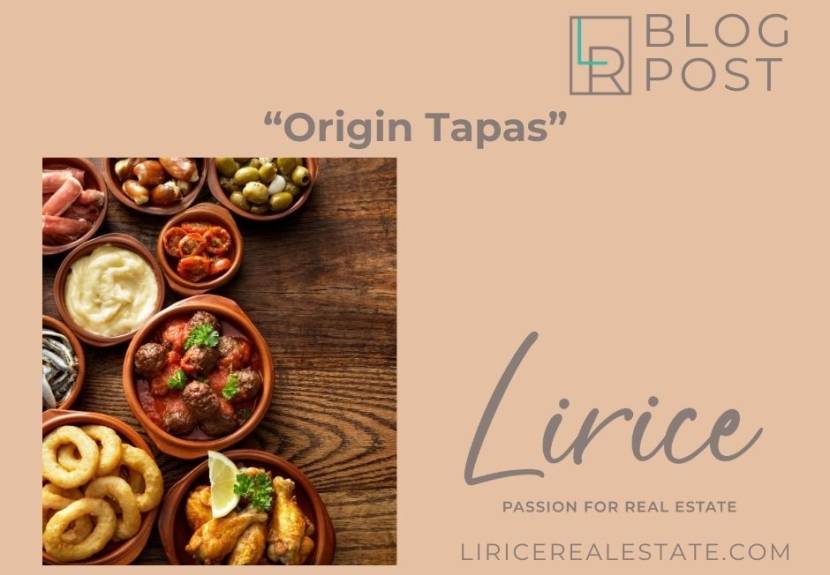
The Origin of Tapas: A Historical Tasty Journey + Free Aioli Recipe
Tapas: The Small Spanish Delicacies with a Rich History
Tapas, the small Spanish bites loved worldwide, have a rich and fascinating history. This tasty tradition is deeply rooted in Spanish culture and comes with various stories and legends about how it all began. In this blog, we explore the origins of tapas and discover how this culinary habit has evolved over the centuries.
The Etymology of Tapas
The word "tapa" comes from the Spanish verb "tapar," which means "to cover." One of the most accepted theories is that tapas originally served as a type of cover for glasses, usually wine or sherry glasses, to prevent dust or insects from entering the drink. These "covers" were often simple pieces of bread or meat.
The Legend of King Alfonso X
One of the most famous stories about the origin of tapas involves King Alfonso X, also known as Alfonso the Wise, who reigned in the 13th century. The story goes that during a period of illness, he had to eat small bites accompanied by wine to aid his recovery. After he recovered, he decreed that wine should only be served in taverns if accompanied by something to eat. This decree is said to have contributed to the spread of the custom of serving small bites with drinks.
Tapas and the Jerez Wineries
Another theory points to the wineries in the Jerez region, known for their sherry production. It became customary to place a piece of bread or ham on top of the sherry glass to prevent fruit flies from getting in. Customers soon began to enjoy these small bites, and wineries started offering a variety of small dishes to keep their customers satisfied.
Regional Influences
Spain is a country of diverse regions, each with its own culinary traditions and specialties. Tapas evolved in different ways in various parts of Spain. In Andalusia, for example, fried fish and seafood are popular tapas, while in northern Spain, particularly in the Basque Country, pintxos (small bites on skewers) are the norm. These regional variations contribute to the rich diversity of tapas we know today.
Modern Tapas: A Global Phenomenon
Today, tapas are an integral part of Spanish culture and are served worldwide in Spanish restaurants and tapas bars. The variety of tapas is enormous, ranging from traditional dishes like albondigas (meatballs) and tortilla española (potato omelet) to more modern and innovative creations. Tapas have evolved from simple snacks to refined dishes that reflect the creativity of chefs.
The Social Aspect of Tapas
One of the most charming aspects of tapas is the social nature of it. Tapas are often shared with friends and family, contributing to a sense of community and togetherness. The idea is to share small bites, have conversations, and enjoy each other’s company. This makes tapas not just a culinary experience, but also a social event.
Conclusion
The origin of tapas is rich in history and folklore, with various theories and stories adding to the mystique and charm of this culinary tradition. What started as simple snacks to accompany drinks has grown into a global phenomenon that embodies the essence of Spanish culture. So the next time you enjoy a tapa, think about the rich history and traditions that make these small bites so special. Salud!
Simple Recipe for Delicious Homemade Aioli:
Ingredients:
- 4 cloves garlic, finely chopped
- 1/2 teaspoon salt
- 1 egg yolk
- 1 teaspoon Dijon mustard
- 1 cup extra virgin olive oil
- 1 tablespoon lemon juice (optional, to taste)
- Freshly ground black pepper (to taste)
Instructions:
- In a mortar, grind the chopped garlic and salt together until you get a paste-like consistency.
- In a bowl, mix the garlic-salt paste with the egg yolk and Dijon mustard.
- Slowly add the olive oil to the mixture while constantly whisking. Add the oil in a thin, steady stream, and continue whisking until the mixture starts to bind and thicken.
- Continue adding oil and whisking until all the oil is incorporated and you have a thick, creamy aioli.
- Taste the aioli and add lemon juice for extra freshness, if desired. Season with black pepper.
- Serve the aioli immediately or store it in an airtight container in the refrigerator for up to a week.
This delicious homemade aioli is perfect as a dip for vegetables, a sauce for fish, or a condiment for grilled meat. Enjoy!























